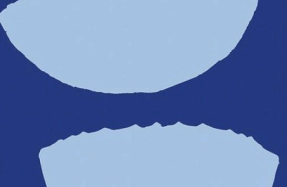Bernard Leach's Equestrian Roof Tiles: and their location within West Counrty Traditions

Standing in the Cube Gallery, in the centre of the Leach Pottery, is a very rare mid - 1920s earthenware sculpture of a horse and rider by Bernard Leach. This sculpture had been roughly cemented onto a generic earthenware ridge tile (FIG 1), and at some point during the last ninety years, it had been mounted onto a rooftop near St. Ives in Cornwall. This Horse and Rider was the focus of my residency in the spring of 2014 – Julia Twomlow, Director of the Leach Pottery (March 2008 – October 2015) had requested that I respond to and research this little understood sculpture.
On arrival at the Leach Pottery it seemed important to discover onto which roof the sculpture had been attached. The roof, many suggested, was that of Beagle’s Cross, one of the buildings that makes up the Leach Pottery complex.[i] Following this lead, I contacted former Leach Pottery apprentices, however, none remembered seeing the Horse and Rider. Adding to the confusion, I was informed that there were three other equestrian ridge tiles located on roofs in St. Ives—and all attributed to Leach; I later found that same assumption annotated in the Royal Cornwall Museum (RCM).
Within the first days of the residency I walked about St. Ives scanning roof lines for the Horse and Rider tiles and found the three near to the Leach Pottery. Dr. Matt Tyas, Exhibitions Co-ordinator of the Leach Pottery, suggested that potter and scholar Peter Smith might be able to help further with my inquiry. Smith is an authority on early English pottery and has studied and subsequently published articles regarding
You’re reading a preview, subscribe to read more.
Start your free 30 days





